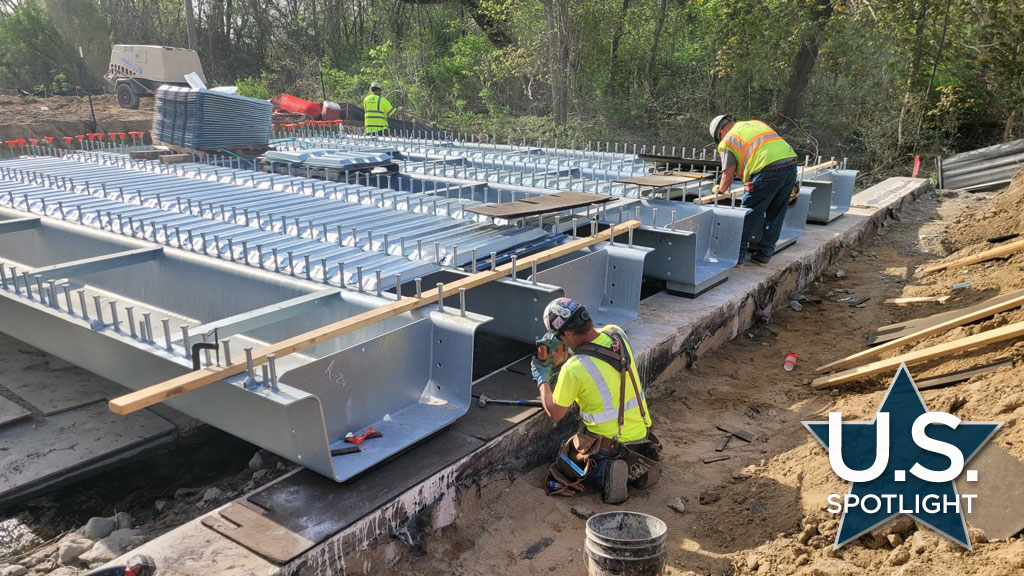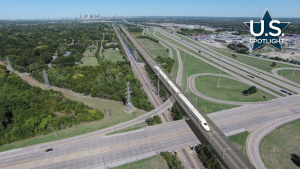A first-ever pilot program under the Michigan Department of Transportation (MDOT) is combining the repair of 19 bridges in serious or critical condition under a single contract to streamline co-ordination and permitting, and to benefit from economies of scale.
The pilot program was funded by the Federal Highway Administration through highway infrastructure program (HIP) funds, specifically to address the overall condition of Michigan’s bridges, which currently rank among the bottom 15 nationally.
“Typically, we split each federal dollar equally between MDOT bridges and local agency bridges,” says Matthew Chynoweth, chief bridge engineer and director of MDOT’s Bureau of Bridges and Structures. “For this program we decided to devote 100 per cent of the money to local agency bridges. It’s also the first time that MDOT is building bridges for the local agencies, so we had to hybridize the permitting between the way we do it and the way the local agencies do it.”
The bridges were selected because the major structures, including abutments and piers, were in good condition, but the superstructures required work. The MDOT contract was tendered as a low-bid, design-build project, with some wiggle room for unforeseen conditions.
There was no requirement to replicate the original type of construction.
The winning bid of US$24.3 million was submitted by a joint venture involving two Michigan contractors —bridge construction specialists C.A. Hull from the eastern part of the state and Anlaan Corporation from the west. The projects are spread across several Michigan counties: Clinton, Eaton, Hillsdale, Ingham, Jackson, Lapeer, Lenawee, Livingston, Luce, Macomb, Muskegon, Ottawa, St. Clair, St. Joseph and Wayne.

The winning design involved stripping off each superstructure and then installing galvanized press brake-formed tub girders, upturned U-shaped girders ideal for short bridge spans. Only three beam specifications would be required to complete all of the repairs, and these would be topped by a new bridge deck.
“We gave the contractor a lot of flexibility in scheduling and resource allocation,” Chynoweth says. “Certain bridge repairs had to be completed within 60 days of starting work and certain bridges within 90 days of starting work. However, we didn’t tell the contractor when they had to start work on any particular bridge. They were also free to work on bridges simultaneously or one after the other.”
To date, the contract has required the accommodation of only minor variations. For example, the design specifications required the placement of rip rap in waterways to a certain elevation to protect the stream. However, in one case the depth of the stream would have required the placement of so much material that the flow of the stream would have been affected.
“That requirement was deleted from the contract for that bridge, so they owe us a credit,” Chynoweth says. “In another case, the hot mix asphalt thickness was greater than anticipated, so they required another pass with the milling machine and we worked with them to pay a little more for that.”
Work began in March. As of mid-June, five of the 19 bridges have been repaired and reopened with a goal of completing all of the projects by November. A 20th bridge will be fully replaced due to hydraulics issues, using the same funding, but under a separate contract. Stakeholders can view project updates on a purpose-built bridge bundling website.
While the pilot program appears cost-effective, Chynoweth says the purpose of the pilot was to pave the way for a much larger bundling program that could more fully benefit from economies of scale.
“That’s where I can see big saving,” he says.
An estimated 59 additional bridges are being considered for rehabilitation or replacement in Phase 2 of the program, which will focus on closed and load-posted bridges. The first bundle, which is anticipated to be let for construction in November of this year, will focus on bridge removal. The remaining bridge projects will be let for construction over the next two years, with all the funding committed by September 2024.











Recent Comments
comments for this post are closed